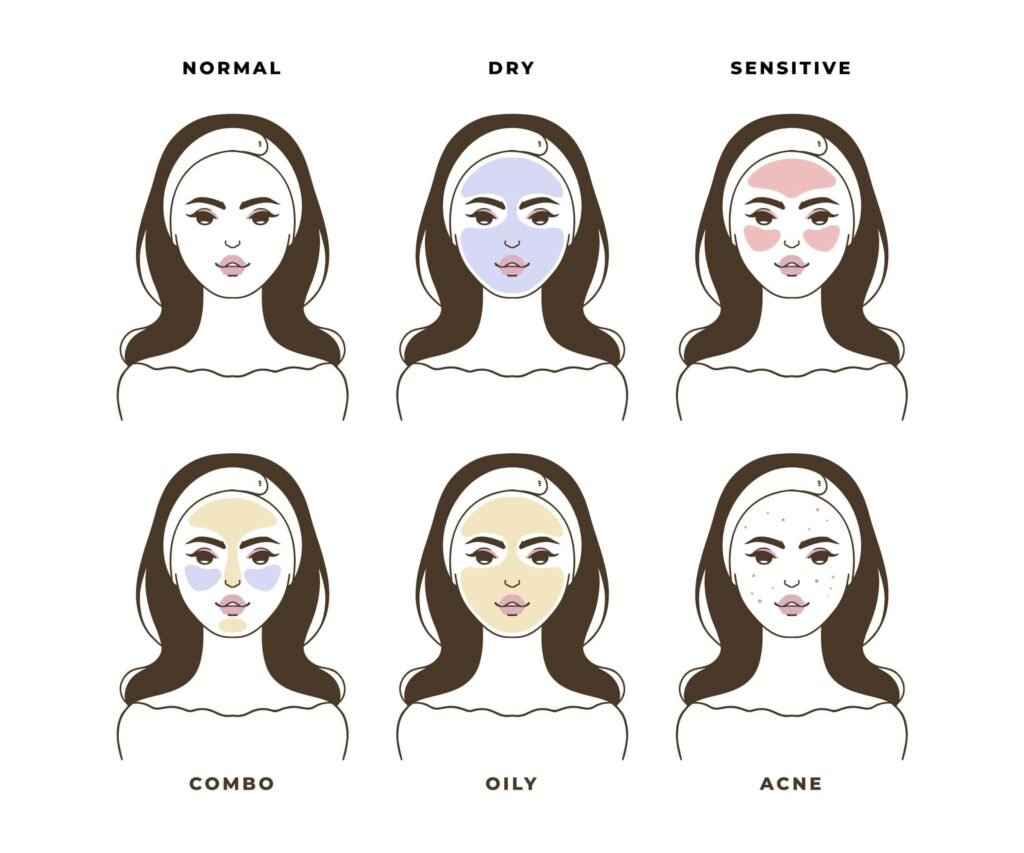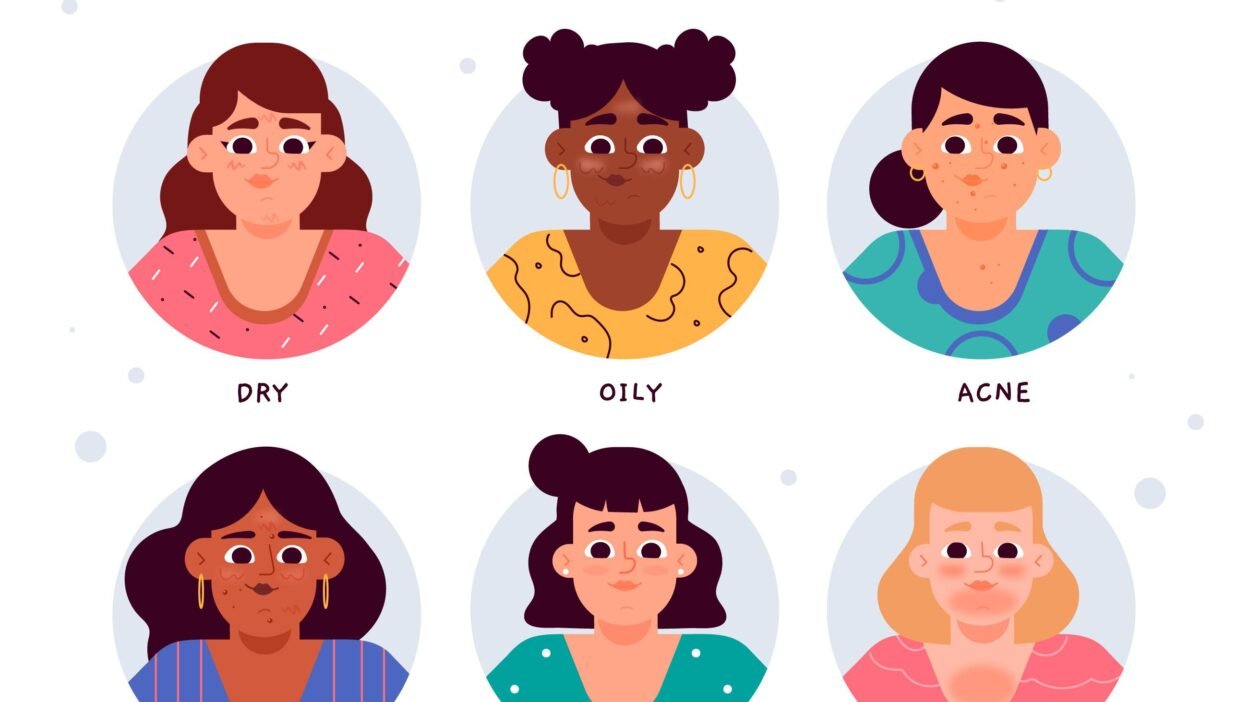Table of Contents
Understanding your skin type is essential for creating a skincare routine that works. It allows you to choose the right products, treatments, and lifestyle habits to keep your skin healthy and radiant. Skin types include normal, dry, oily, combination, and sensitive, and it’s important to note that skin type can change over time due to various factors like age, hormones, or climate.
What Determines Skin Type?

Several key factors influence your skin type:
- Moisture Content: Affects skin’s elasticity and hydration levels.
- Oil Production: Determines how soft or greasy the skin feels.
- Sensitivity: Influences how your skin reacts to different products or environmental factors.
How to Identify Your Skin Type
🌿 Normal Skin
Often considered the most balanced skin type, normal skin has just the right amount of oil and moisture. Signs include:
- Minimal blemishes or imperfections
- No significant sensitivity
- Pores are barely visible
- Healthy, glowing appearance
🔹 Note: Even with normal skin, cheeks may get dry occasionally. Gentle exfoliation and a light moisturizer can help maintain balance.
🌗 Combination Skin
This type features both oily and dry areas, usually with oil concentrated in the T-zone (forehead, nose, and chin). Causes may include genetics or hormonal imbalances. Common signs:
- Enlarged or visible pores in oily zones
- Blackheads
- A shiny appearance in certain areas
💧 Dry Skin
Dry skin often feels tight, rough, or flaky. You might notice:
- Tiny or nearly invisible pores
- Red patches
- Less skin elasticity
- Fine lines appearing more prominently
🧴 Tip: Use a thick, fragrance-free moisturizer immediately after washing your face to lock in moisture.
🔥 Oily Skin
Common in teens and young adults, oily skin produces excess sebum, which can lead to:
- Very visible pores
- A shiny or greasy appearance
- Frequent blackheads or breakouts
🌬️ Tip: Avoid over-washing. Cleanse twice daily with a mild face wash designed for oily skin.
🌸 Sensitive Skin
This skin type reacts easily to products or environmental changes. You may experience:
- Redness
- Itching or burning sensation
- Dryness or flakiness
🧪 Important: Always patch-test new products and avoid alcohol-based or heavily fragranced skincare.
Why Your Skin May Be Dry, Oily, or Sensitive
Causes of Dry Skin:
- Genetics
- Aging
- Hormonal changes
- Climate (cold, dry air or UV exposure)
- Long, hot showers
- Harsh soaps and cleansers
- Certain medications
Causes of Oily Skin:
- Puberty or hormone fluctuations
- Stress
- High humidity or heat
- Certain antibiotics or medications
Causes of Skin Sensitivity:
- Acne blocking pores and triggering inflammation
- Skin conditions like rosacea (redness and broken capillaries)
- Contact dermatitis from products like fragrances, soap, or makeup
Skincare Tips for Every Skin Type
For Oily Skin:
- Limit face washing to twice a day
- Use oil-free, non-comedogenic products
- Don’t pick at pimples or blackheads
- Avoid heavy exfoliation
For Dry Skin:
- Use lukewarm water, not hot
- Avoid scented or alcohol-based cleansers
- Choose rich creams over lotions
- Moisturize right after bathing
- Use humidifiers in dry environments
General Tips for All Skin Types:
- Always moisturize, especially after showers
- Include leafy greens like spinach in your diet
- Use honey to treat dry lips or minor irritations
- Choose creams with retinoids (Vitamin A) to reduce fine lines
- Apply sunscreen daily to prevent premature aging
- Clean your phone regularly to reduce facial bacteria
- Add omega-3 rich foods (fish, olive oil, etc.) to your meals
- Avoid direct contact between your skin and hair products
- Get enough sleep to support skin cell renewal
- Manage stress and practice self-care
- Gently exfoliate regularly to remove dead skin cells
- Avoid smoking as it accelerates skin aging
Final Thought:
Your skincare journey starts with understanding your skin’s unique needs. By identifying your skin type and following appropriate care tips, you can build a routine that enhances your natural glow and keeps your skin protected against environmental and lifestyle stressors.





